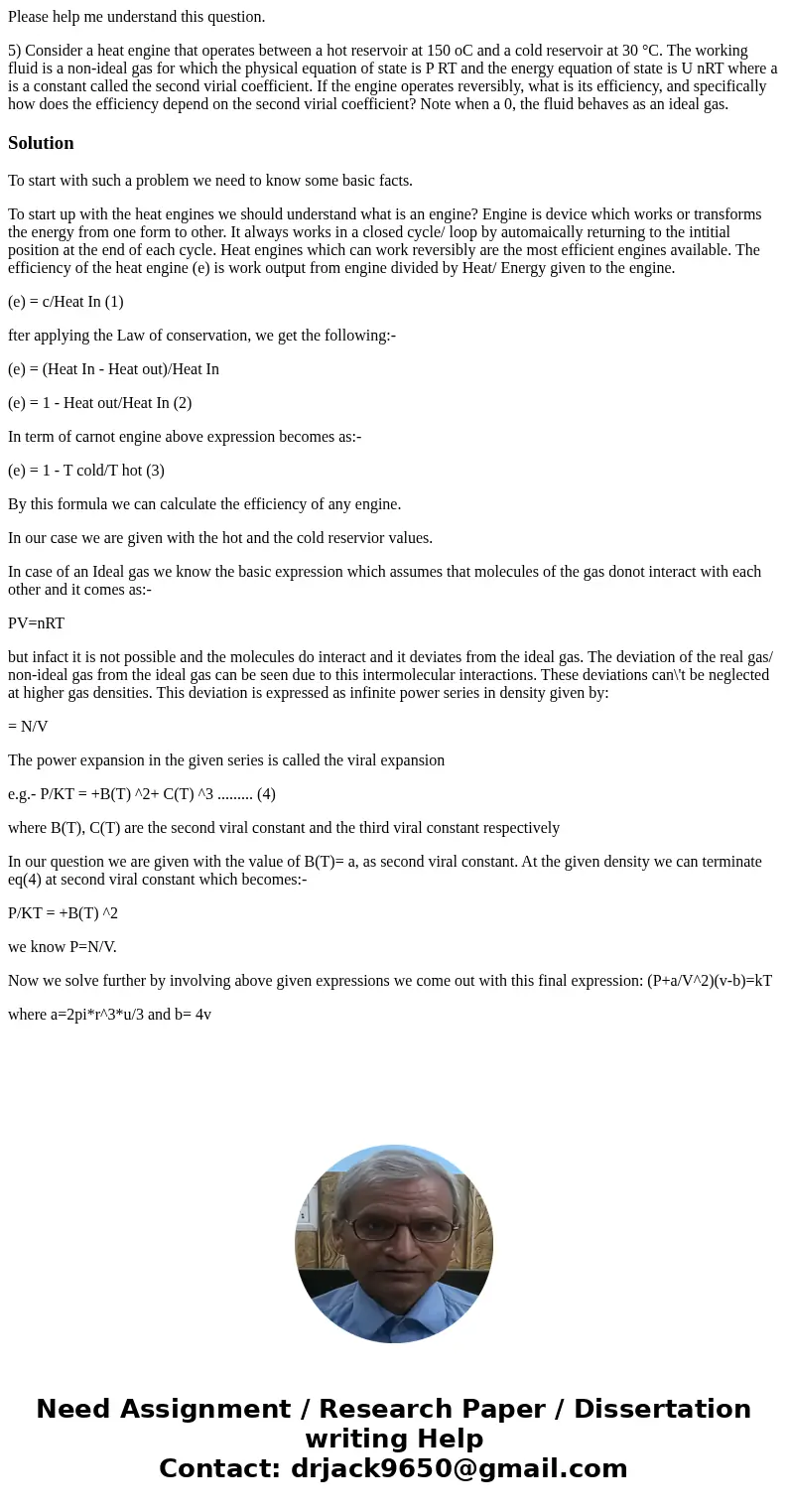Please help me understand this question 5 Consider a heat en
Please help me understand this question.
5) Consider a heat engine that operates between a hot reservoir at 150 oC and a cold reservoir at 30 °C. The working fluid is a non-ideal gas for which the physical equation of state is P RT and the energy equation of state is U nRT where a is a constant called the second virial coefficient. If the engine operates reversibly, what is its efficiency, and specifically how does the efficiency depend on the second virial coefficient? Note when a 0, the fluid behaves as an ideal gas.Solution
To start with such a problem we need to know some basic facts.
To start up with the heat engines we should understand what is an engine? Engine is device which works or transforms the energy from one form to other. It always works in a closed cycle/ loop by automaically returning to the intitial position at the end of each cycle. Heat engines which can work reversibly are the most efficient engines available. The efficiency of the heat engine (e) is work output from engine divided by Heat/ Energy given to the engine.
(e) = c/Heat In (1)
fter applying the Law of conservation, we get the following:-
(e) = (Heat In - Heat out)/Heat In
(e) = 1 - Heat out/Heat In (2)
In term of carnot engine above expression becomes as:-
(e) = 1 - T cold/T hot (3)
By this formula we can calculate the efficiency of any engine.
In our case we are given with the hot and the cold reservior values.
In case of an Ideal gas we know the basic expression which assumes that molecules of the gas donot interact with each other and it comes as:-
PV=nRT
but infact it is not possible and the molecules do interact and it deviates from the ideal gas. The deviation of the real gas/ non-ideal gas from the ideal gas can be seen due to this intermolecular interactions. These deviations can\'t be neglected at higher gas densities. This deviation is expressed as infinite power series in density given by:
= N/V
The power expansion in the given series is called the viral expansion
e.g.- P/KT = +B(T) ^2+ C(T) ^3 ......... (4)
where B(T), C(T) are the second viral constant and the third viral constant respectively
In our question we are given with the value of B(T)= a, as second viral constant. At the given density we can terminate eq(4) at second viral constant which becomes:-
P/KT = +B(T) ^2
we know P=N/V.
Now we solve further by involving above given expressions we come out with this final expression: (P+a/V^2)(v-b)=kT
where a=2pi*r^3*u/3 and b= 4v

 Homework Sourse
Homework Sourse